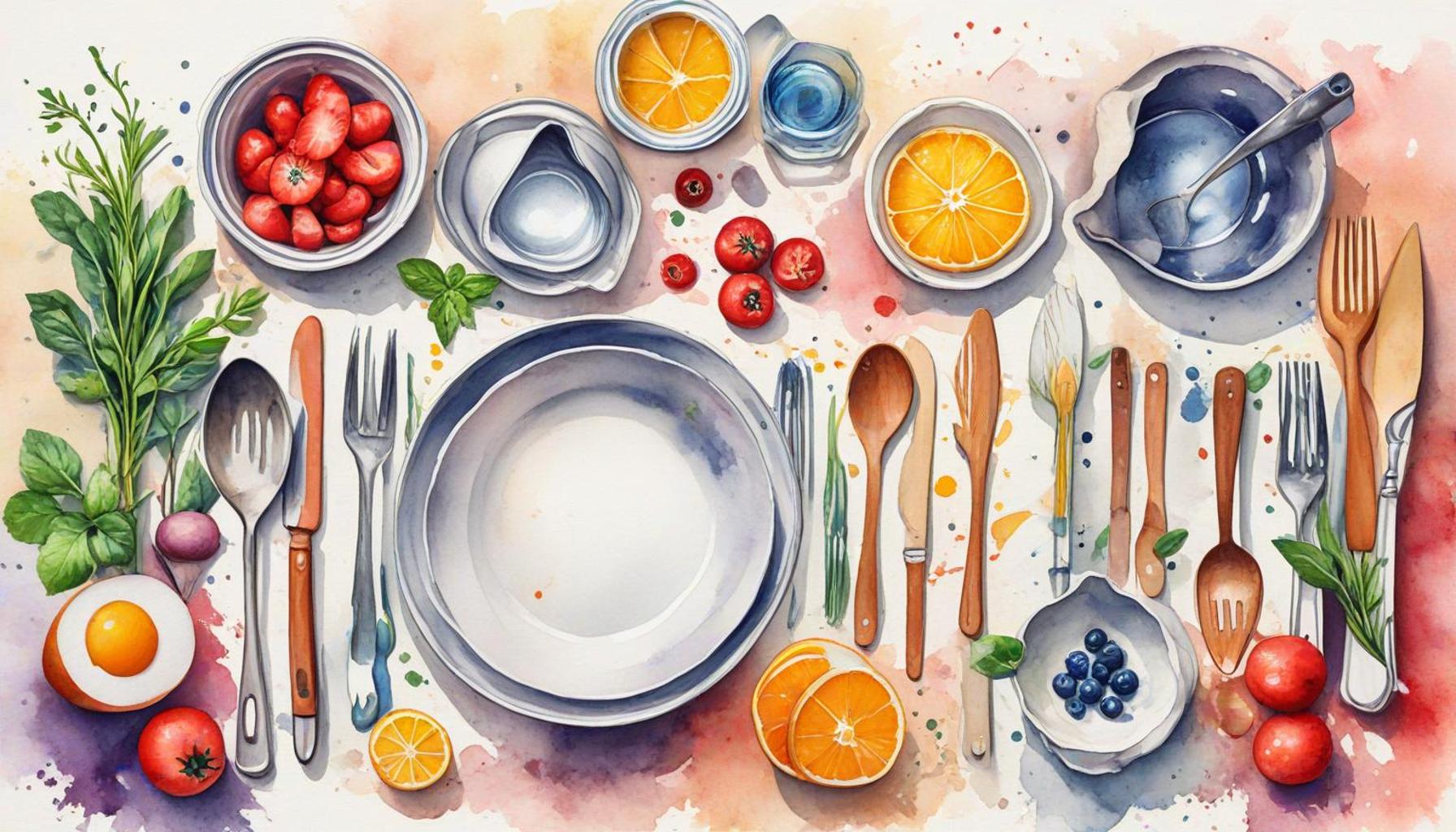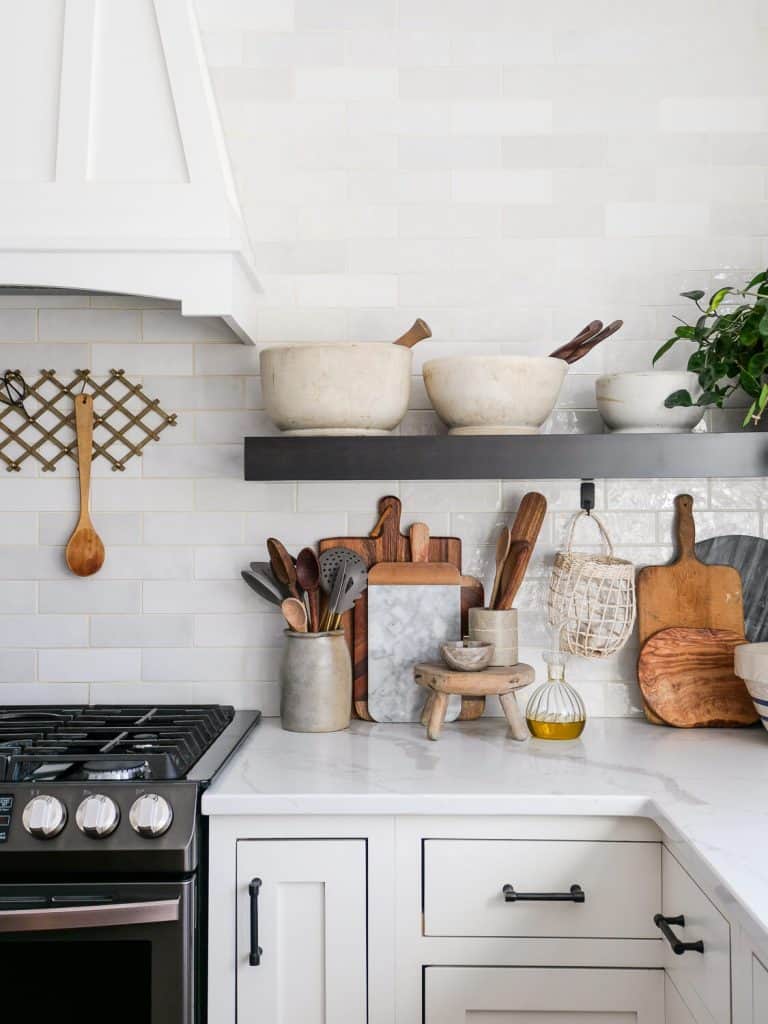Minimalism in the Kitchen: How to Reduce Utensils and Increase Efficiency in Meal Preparation

The Case for Minimalism in Your Kitchen
A cluttered kitchen can easily transform the joy of cooking into a chaotic chore. By adopting a minimalist approach, not only can you reduce utensils, but you can also enhance the efficiency of your meal preparation. Imagine walking into a kitchen where every tool has a purpose, and every surface is clear and inviting! Such an environment can significantly improve your culinary experience, leading to more creativity and less frustration.
To understand why minimalism is beneficial in the kitchen, let’s delve deeper into its advantages:
- Less Stress: A reduction in the number of utensils translates to less decision fatigue. When your countertops are clear, you can focus on your creativity rather than being overwhelmed by clutter. For instance, instead of rummaging through numerous pans and pots to find the right one for your recipe, a well-organized kitchen lets you quickly grab what you need, easing your mind and enhancing your cooking flow.
- Time Efficiency: In a streamlined space, your cooking process can be quicker and more enjoyable. The time spent searching for tools is minimized when everything is where it belongs. Consider the difference between a drawer that’s overflowing with gadgets and one that contains only essentials—it’s a game changer.
- Improved Organization: A minimalist kitchen promotes better organization, making it easier to keep track of what you have. Knowing where each ingredient and utensil is located helps in meal planning, allowing you to visualize what meals can be prepared with what you have on hand.
Starting the transformation into a minimalist kitchen may seem daunting, but the process can be broken down into manageable steps:
- Assess What You Use: Take stock of your kitchen items. Identify utensils that you frequently use versus those that simply occupy space. For example, if you haven’t touched your bread maker in two years, it may be time to rethink its place in your setup.
- Opt for Multi-Functional Tools: Invest in gadgets that serve more than one purpose, such as a food processor that can chop, dice, and puree. This way, you reduce the number of individual tools without sacrificing functionality.
- Declutter Regularly: Make it a habit to review and remove anything that doesn’t contribute to your cooking experience. Set aside time monthly to assess your kitchen inventory, ensuring it stays organized and purposeful.
Ultimately, with these practical tips, your kitchen has the potential to evolve into a space of creativity and efficiency. As you transform your culinary environment, you may find that minimalism not only streamlines your cooking routine but also enriches your overall experience in the kitchen. Embrace this approach and discover how a simpler space can foster greater joy in your culinary pursuits!
DON’T MISS: Click here to discover effective personal organization strategies

Steps to Simplify Your Kitchen Essentials
Making the shift to a minimalist kitchen isn’t just a trend; it’s a lifestyle change that can transform your cooking habits. By focusing on the essentials, you can cultivate a space that not only looks appealing but also operates at peak efficiency. So, how can you start to simplify your kitchen and truly enhance your meal preparation experience? Here are some actionable steps to guide you through the process:
- Evaluate Your Current Inventory: Begin by taking a comprehensive inventory of your kitchen utensils and gadgets. This step requires you to physically remove items from drawers and cabinets to see what you have on hand. Pay particular attention to tools that haven’t been used in the past year. For instance, if you find that your specialty sushi rolling kit has gathered dust, ask yourself if it’s realistically going to be used more frequently in the future, or if it can be given away. Consider if you can live without them or if they can be replaced by a more versatile device, like a cutting board that doubles as a serving platter.
- Prioritize Essential Utensils: For effective meal preparation, focus on a core group of essential utensils. Common staples might include a chef’s knife, cutting board, mixing bowls, and measuring cups. These tools serve multiple purposes: a sharp chef’s knife can chop vegetables, slice meats, and even mince herbs, allowing you to avoid the excess of specialty gadgets that often clutter your space. By curating a selection of multifunctional tools, you’ll keep your kitchen organized and ready for any culinary adventure.
- Adopt Versatile Cookware: Embrace cookware that offers multiple functionalities. A cast-iron skillet, for instance, can be used for frying, baking, and even as a stunning serving dish. This iconic piece not only reduces the need for multiple pans but also provides excellent heat retention for even cooking. Moreover, its aesthetic appeal adds a rustic charm to your kitchen. Consider investing in pots that can also serve as mixing bowls or containers that double as measuring devices to further streamline your collection.
- Embrace Digital Solutions: In today’s tech-savvy world, consider leveraging digital solutions to minimize physical items. Use meal planning apps, such as Mealime or Paprika, to help track ingredients and plan recipes. These platforms allow you to quickly find new meals based on what you have in stock and eliminate the need for bulky printed cookbooks that can take up valuable shelf space. This approach not only streamlines your kitchen processes but also helps keep you organized and inspired in your meal planning.
- Practice Mindful Purchasing: The journey toward a minimalist kitchen shouldn’t end after decluttering. As you shop for new items, adopt a mindful purchasing policy. Challenge yourself to question the necessity and multifunctionality of each potential addition. Opt for high-quality tools rather than dozens of cheap gadgets. For instance, investing in a single reliable food processor can eradicate the need for several manual tools, ultimately saving you from future clutter while enhancing your cooking efficiency.
By diligently following these steps, you can cultivate a kitchen filled with purpose and clarity. Think of the extra time you’ll gain for creativity, family meals, or simply enjoying the art of cooking again. A streamlined kitchen not only boosts your efficiency but also leads to more joyful and spontaneous culinary experiences. In a society that often glorifies excess, redefining your relationship with your kitchen can bring renewed meaning and pleasure to the heart of your home.
| Advantages | Description |
|---|---|
| Streamlined Cooking Processes | Fewer utensils mean less time spent on preparation and cleanup, which enhances your cooking efficiency. |
| Enhanced Focus on Ingredients | Minimalism encourages you to value high-quality ingredients instead of relying on various utensils, enhancing flavor and nutrition in your meals. |
| Easy Organization | A minimalist kitchen promotes better organization, making it quicker to locate and access essential utensils during meal preparation. |
| Reduced Stress | By minimizing clutter, a simple kitchen space fosters a peaceful cooking environment, leading to a more enjoyable cooking experience. |
Incorporating minimalism into your kitchen is not just about aesthetics; it is a practical approach to streamline your cooking life. With less clutter, you can focus on what truly matters—the food. By adopting this philosophy, you empower yourself to make intentional choices in the kitchen. Imagine a space where the tools you use are not only essential but also cherished, leading to a more satisfying cooking experience. Techniques like selecting multifunctional tools can further enhance this minimalist approach, making your kitchen both efficient and enjoyable. Embracing minimalism opens opportunities for culinary creativity, allowing you to explore new recipes without feeling overwhelmed by too many choices.
DISCOVER MORE: Click here to explore effective decluttering strategies
Designing a Functional and Aesthetic Space
Minimalism in the kitchen is not just about reducing the number of utensils; it also encompasses the overall design and organization that enhance productivity. By adopting a thoughtful layout, you can create a seamless workflow that supports efficient meal preparation.
- Utilize Vertical Space: Kitchens often come equipped with underutilized vertical space. By installing wall-mounted shelves or pegboards, you can keep frequently-used utensils and spices within easy reach while freeing up countertop space. Consider using clear jars or labeled containers to store dry goods or small tools, providing a visually appealing display that also simplifies your pantry inventory.
- Designate Zones: To maximize efficiency, consider dividing your kitchen into designated zones based on meal preparation stages. For example, have a cooking zone that includes your stove, essential prepping tools, and cookware nearby. A separate washing zone with a dish rack and cleaning supplies can keep your workspace from becoming cluttered. This organizational strategy not only makes cooking flow more naturally but also minimizes the time spent searching for tools or ingredients.
- Cabinet and Drawer Organization: The layout of your cabinets and drawers is crucial for minimizing clutter. Use drawer dividers to keep utensils sorted and accessible. Store less frequently used items in higher cabinets and ensure daily essentials are easily accessible in lower drawers. A simple label system can also save time, allowing you to locate items quickly without rummaging through every drawer or cabinet.
- Transition to Open Shelving: Open shelving can dramatically enhance the aesthetic appeal and functionality of a minimalist kitchen. It allows you to display your favorite dishware while also keeping essential items visibility. This approach encourages you to keep only your favorite and most functional pieces, reducing the tendency to accumulate unnecessary items. As a bonus, it contributes to a lighter and airier kitchen atmosphere.
- Invest in Sliding or Pull-Out Storage: Consider adding pull-out shelves, lazy Susans, or sliding racks that make it easier to access pots, pans, and other utensils. These storage solutions can help you take full advantage of cabinet depth, reducing the strain of digging through items to find what you need. By making items more accessible, you can cut down on meal prep time substantially.
Beyond organization, color and aesthetics in a minimalist kitchen can also create an environment conducive to cooking. Neutral tones, for example, are often favorable as they can create a calm and inviting atmosphere, allowing for greater focus during meal preparation. Incorporating natural materials, such as wood and stone, can also bring warmth and texture while maintaining a sleek design.
Ultimately, embracing minimalism in your kitchen goes beyond the physical items you own; it’s about fostering an environment that nourishes creativity and supports your cooking endeavors. When every item has a place, and every space serves a purpose, you can devote your energy to what truly matters: enjoying the process of cooking and sharing meals with those you love.
DIVE DEEPER: Click here to discover the art of minimalist design
Embracing Minimalism for Culinary Success
In conclusion, adopting minimalism in the kitchen is a transformative approach that not only streamlines your meal preparation process but also cultivates a serene atmosphere conducive to creativity and enjoyment. By reducing utensils and embracing a more intentional selection of tools and storage solutions, you can enhance your kitchen’s functionality. The strategies discussed, from utilizing vertical space to organizing cabinets and even transitioning to open shelving, create an environment where efficiency thrives, leaving more room for culinary exploration.
As we navigate modern life, the chaotic pace often encourages clutter—both physical and psychological. Minimizing kitchen items allows for less distraction and more clarity, which can lead to a more enjoyable cooking experience. By establishing designated zones and investing in practical storage solutions, you’ll find your cooking workflow improves, saving you time that could be better spent with loved ones around the dinner table.
Ultimately, the journey toward a minimalist kitchen is not about deprivation; it’s about finding joy in simplicity and functionality. As you reimagine your culinary space, remember that every item should serve a purpose, contributing to your culinary journey. Whether you are an experienced chef or a novice cook, embracing minimalism can truly revolutionize your approach to meal preparation, making it a delightful and efficient endeavor.


